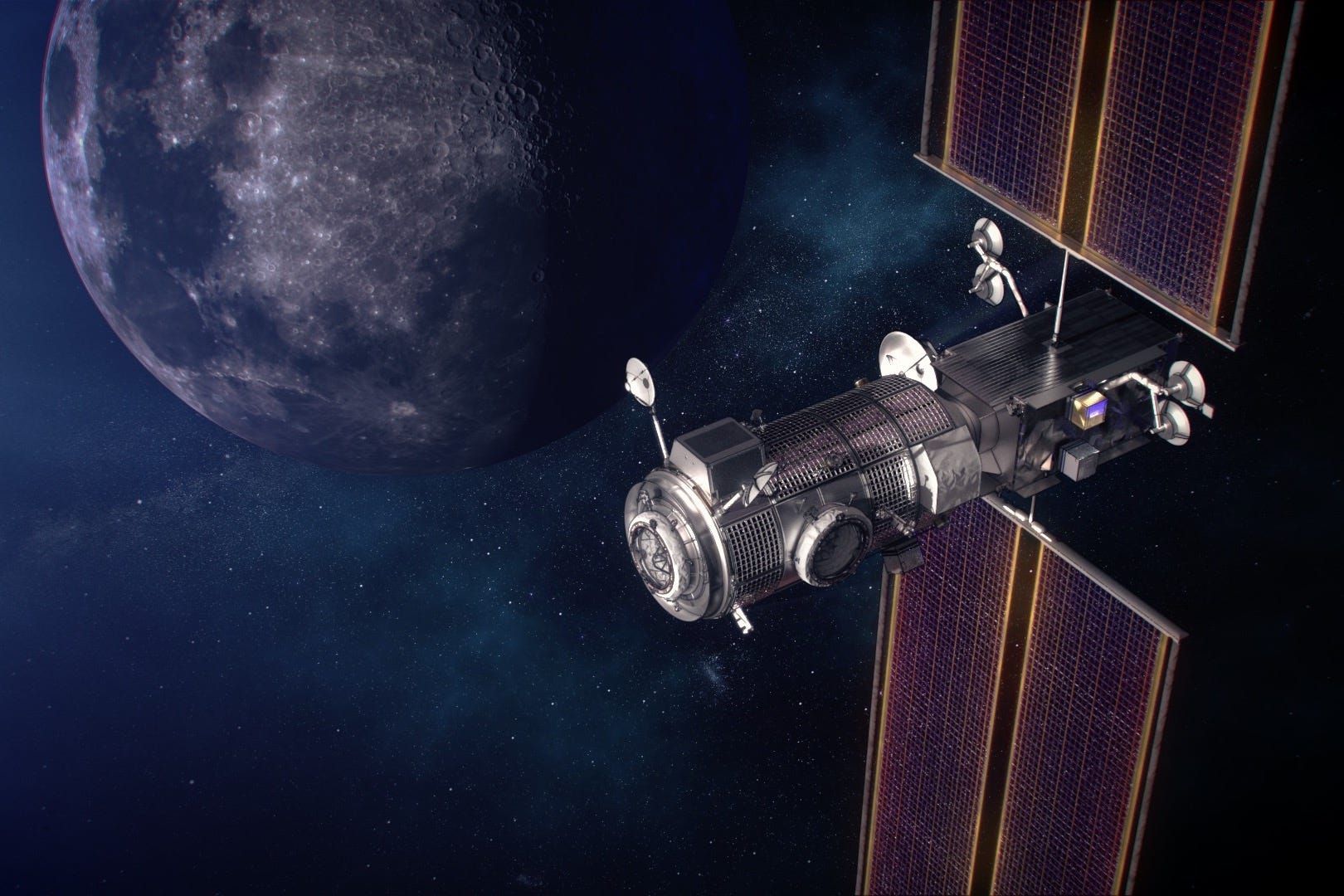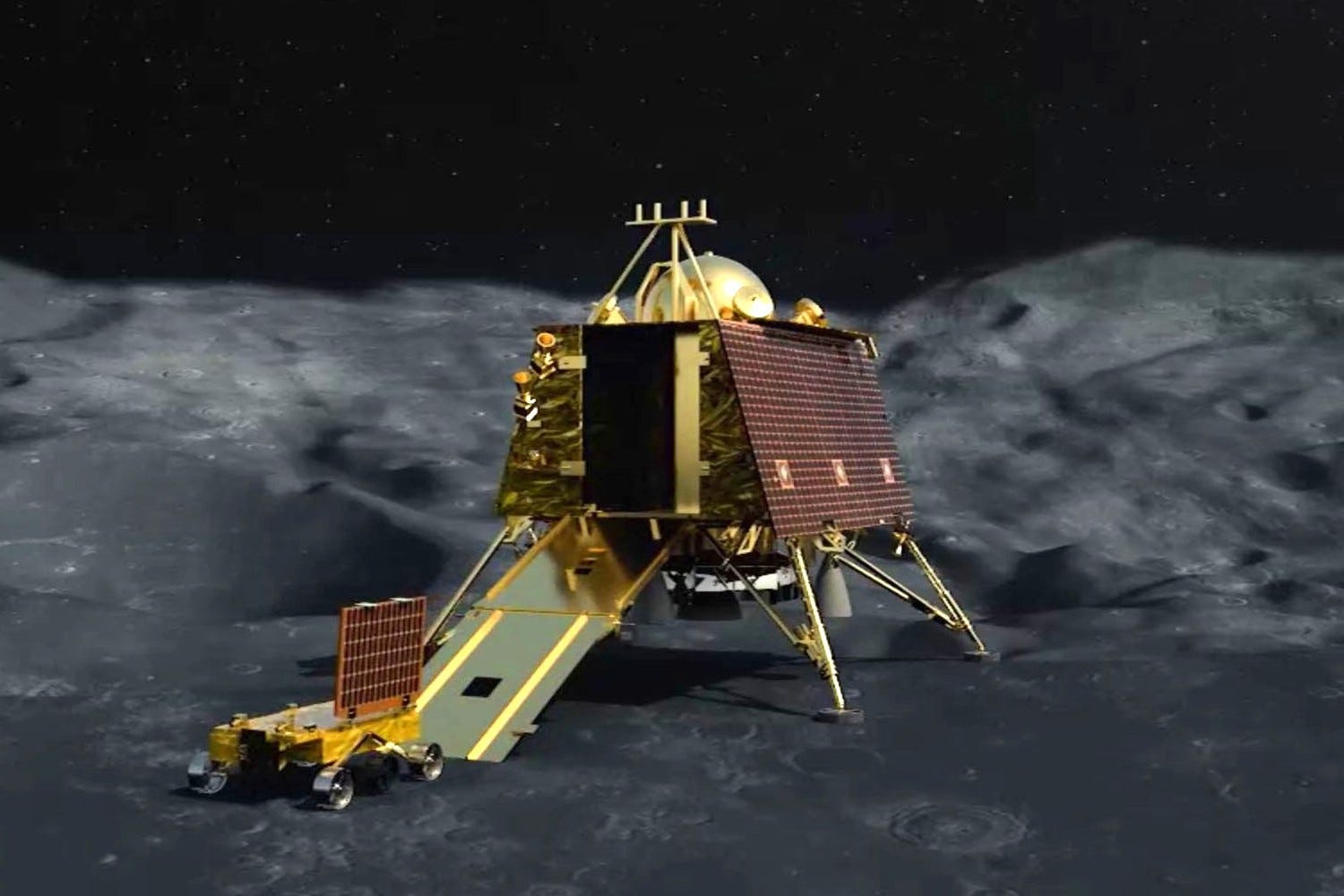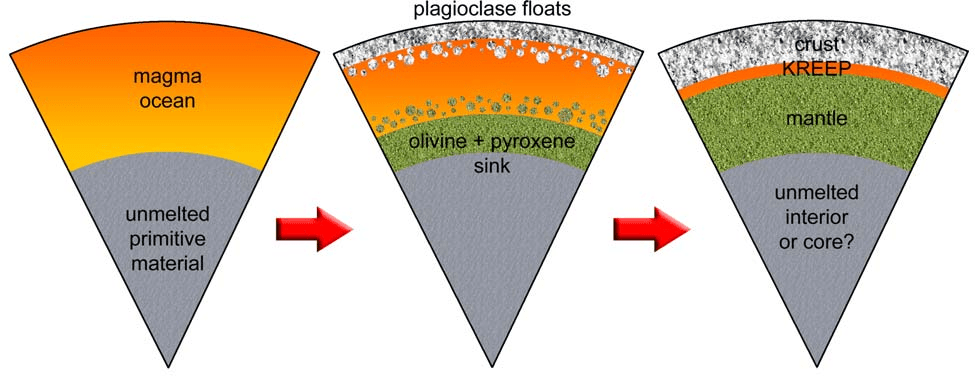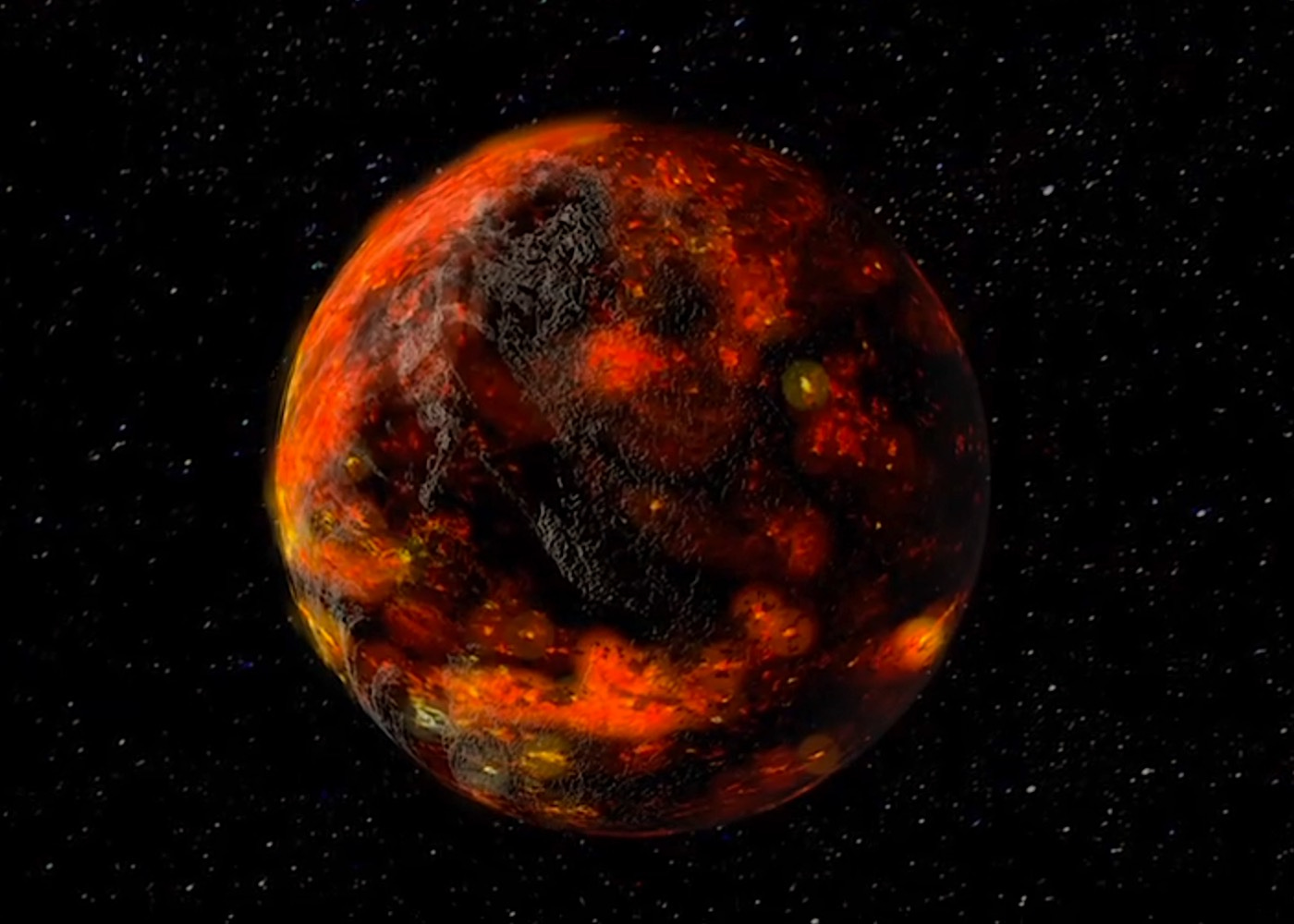Moon Monday Issue #61
NASA Artemis IV to advance lunar station assembly instead of continuing human Moon landings; a 'slushy magma' model for how our Moon formed; Chandrayaan 3 launches this year, and more lunar updates.
Highlight
We finally have clarity on what NASA is planning for its fourth and fifth Artemis Moon missions after Artemis III lands astronauts on the Moon in 2025. SpaceNews reports that Artemis IV will not attempt a landing itself and instead advance the assembly of the agency-led international Gateway lunar station. This mission agenda was revealed for the first time last week at a two-day meeting of the NASA Advisory Council’s Human Exploration and Operations Committee.
Specifically, Artemis IV will deliver the ESA- and JAXA-developed International Habitation module (i-HAB) to the Gateway, presumably in 2026. By that point, the Gateway lunar station would be in its unique lunar orbit and consist of its two initial modules—the Power and Propulsion Element (PPE) and the Habitation and Logistics Outpost (HALO)—launched on a SpaceX Falcon Heavy rocket in late 2024. i-HAB will provide more space for crew to live, work, and conduct research in compared to the HALO module.

Artemis IV will not only be the first mission to send astronauts to the Gateway but also feature the first flight of the SLS rocket’s Block 1B version. This version sports an enhanced upper stage capable of lifting about 10,000 kilograms more cargo than the SLS version to be used on the first three Artemis launches.
The Artemis V mission, launching no earlier than 2027, will see humans landing on the Moon after visiting the Gateway. That mission will deliver ESA’s ESPRIT communications and refueling module, the Canadian robotic arm system, an advanced crewed lunar rover, and astronauts to the lunar station. A commercial human landing system, competitively selected by NASA via its LETS program, will dock with the Gateway, and land the astronauts and the rover on the Moon’s surface.
In the meanwhile, NASA is still hoping to launch the uncrewed Artemis I mission this March despite technical delays, as the agency is inviting media to register for their launch and prelaunch coverage in March itself.
Exploration
My suspicion that ISRO’s New Year’s message incorrectly implied a year worth of delay in the launch of India’s Chandrayaan 3 Moon landing mission turned out to be correct. ISRO’s newly appointed Chairman S. Somanath told the Times of India (paid article; here’s a newspaper clipping) that Chandrayaan 3 is launching this year itself, as originally planned. In fact, he says the mission’s rocket GSLV Mk III—and India’s most powerful launch vehicle—is ready and awaiting delivery of the spacecraft stack. The stack consists of a Chandrayaan-2-like lander, and an orbiter to propel the lander to the Moon as well as relay communications during and after landing. This is curious because the Chandrayaan 2 orbiter was designed to relay communications between that mission’s lander and Earth too, and is still functioning in the same orbit. It’s not clear why ISRO has decided to not use the Chandrayaan 2 orbiter for Chandrayaan 3’s relay services.

In any case, the Chandrayaan 3 lander will carry, among other experiments, a thermal probe and a seismometer to study the Moon’s interior. Being a repeat attempt of Chandrayaan 2’s surface part of the mission, the Chandrayaan 3’s landing region is expected to be in a lunar highland region too. As such, the rover will have a pair of spectrometers to determine what the ancient lunar crust is made of.
According to Israel’s Foreign Minister Yair Lapid, the country is about to sign the U.S.-led Artemis Accords. If so, Israel will join the 14 other signee countries who have a consensus on best practices to follow when exploring the Moon and deep space.
Spanish-German startup Plus Ultra and ispace Japan announced a collaboration on January 20, which would involve ispace deploying the former’s commercial communications and navigation satellites in orbit around the Moon this decade. Each satellite in this constellation of eight weighs about 400 kilograms, which is why it will be up to ispace’s far more capable Series 2 landers to deploy them, before they attempt landing on the Moon for their primary missions. Plus Ultra says once deployed, the satellites will provide continuous high-speed communications of up to 100 Mbps between any location on or around the Moon, including the farside and the poles. ispace itself hopes to use this service as a relay mechanism for their future farside Moon landing missions.
Science
Our leading theory of how our Moon formed suggests that shortly after that event, the Moon was covered in a global magma (molten rock) ocean at least 500 kilometers deep. With time, this magma ocean cooled and crystallized to form the Moon’s inner mantle and outer crust.
When the magma ocean was crystallizing, the heavier minerals sank and formed the mantle. The less dense minerals floated on top, and crystallized in about a hundred million years to form a light anorthosite-based crust, best visible to us as the bright regions on the Moon. Analysis of lunar samples brought to Earth by Apollo missions confirmed the molten state of the ancient Moon and how its crust formed.

However, recent analysis of lunar meteorites, that likely represent a more random sampling of the Moon’s crust than Apollo samples, and remote sensing results from recent missions tell us that the Moon’s crust isn’t really homogenous in its composition. Further, the ages of lunar anorthosites span a range of almost 300 million years, three times more than expected. This means that rapid crystallization of a purely liquid magma ocean cannot explain the full diversity of the Moon’s crust and the time needed to produce it.
In a new paper, scientists suggest based on mathematical models that convection caused by the cooling of the magma ocean should’ve been strong enough to avoid a clean delineation between the heavier and lighter minerals in the mantle. Ergo, the crystals remained suspended for a longer time, turning the liquid ocean slushy and varied. The slower cooling of this slushy ocean’s topmost layer and ascending pockets of magma from within together formed the Moon’s crust. The authors say this model reconciles all that we know about the lunar crust now with the most commonly accepted origin scenario of our cosmic neighbor.

More Moon
Don Mitchell maintains a cool webpage of Moon images captured by Soviet missions, including scans of original film recordings.
Thank you Arun Raghavan and Open Lunar Foundation for supporting me and powering this edition of Moon Monday.
Everyone, I’m publishing this one-of-a-kind Moon exploration newsletter for free, with no ads. And it will stay that way. If you like my work, support me to keep it going.
